RAILROAD SIGNALS of the U.S.
GRADE CROSSING PROTECTION
Crossing Signs Only
Crossbucks Only
Flashing Only Installations
Standard Crossing Gates
Cantilevered Installations
Wig-Wigs
Rotating Banner
Other
RAILFAN GUIDES HOME
RAILROAD SIGNALS HOME
This section briefly touches on grade crossing protection of all sorts, and is by no means comprehensive. It combines all of the separate pages I previously had on these signals, sorry for it's size, (and it may get bigger).
For pedestrian crossing gates,
click here.
Acknowledgements:
Jim Mihalek - Minneapolis MN,
Abram Burnett - Harrisburg PA, Robert Ashworth, Aaron Border, Chad Kluck - St
Paul MN, Mike Kamys - Chicago IL
https://rrx.chadkluck.net/2012/12/railroad-crossing-signs-in-various-shapes-and-sizes/
Railroad Crossing and Stop Signs Only
Spencer NC - NS (SR)
CSX in Rosedale MD (Baltimore on the east
side)
Rosedale MD (Baltimore on the east side) -
Schaefers Ln
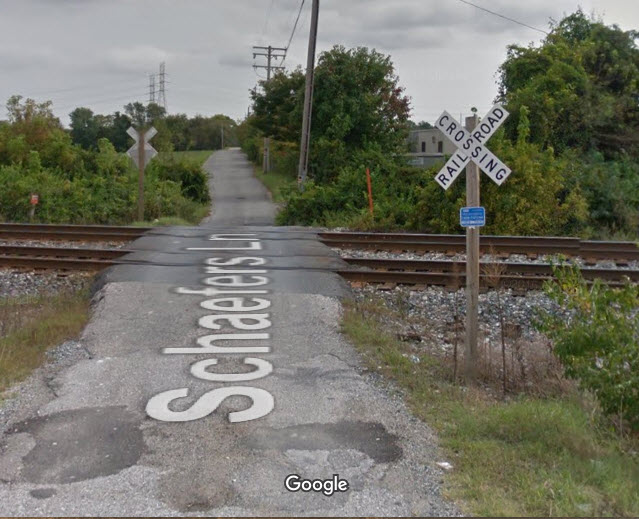
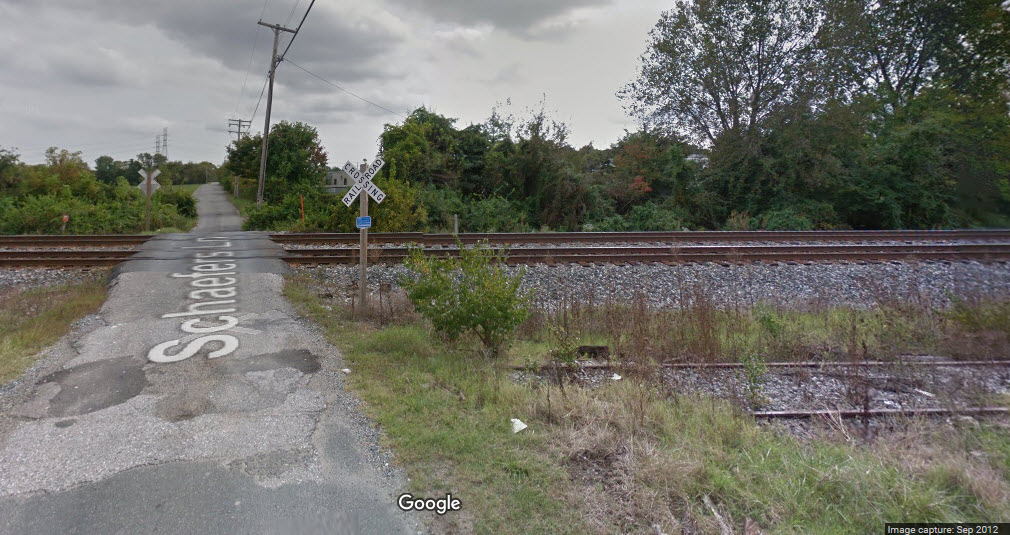
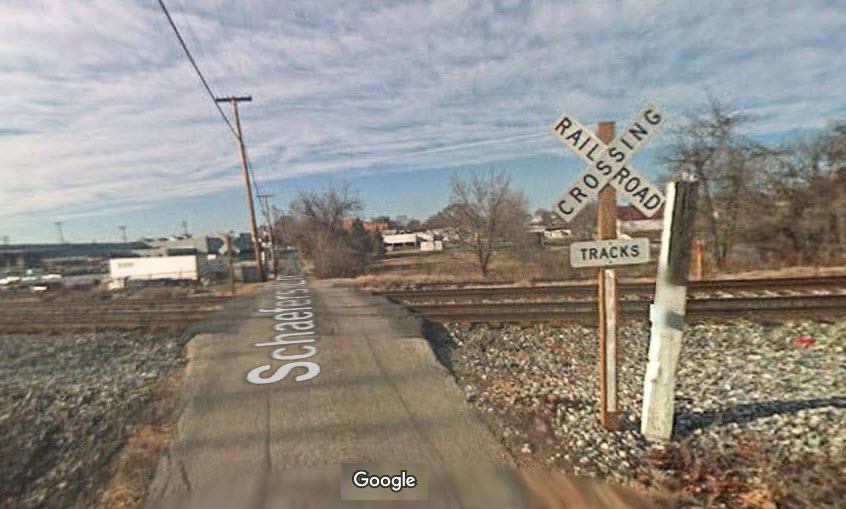
Rosedale MD (Baltimore on the east side) -
Contractors Rd
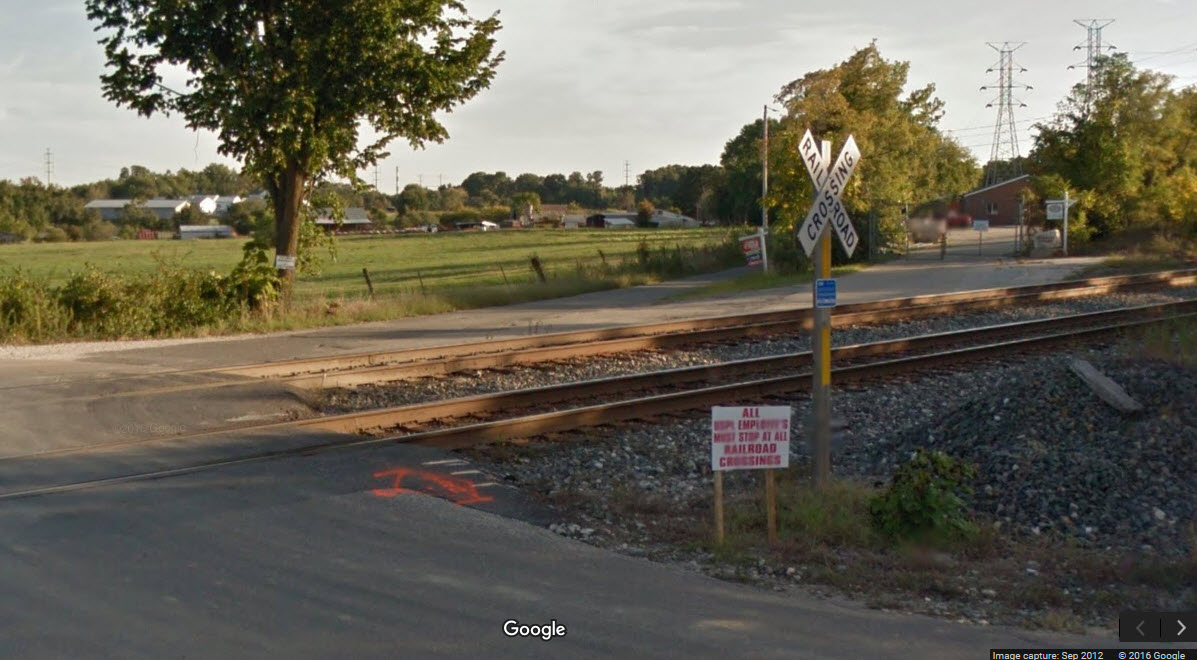
Rosedale MD (Baltimore on the east side) -
Lake Dr
CSX on the east side of Baltimore, coming out of Bayview Yard before you hit the
Beltway, I-695, passes through a mixed industrial and residential neighborhood.
Most of the grade crossings along this section of the CSX mainline are protected
by nothing other than a simple set of crossbuck signs. Along this stretch
of track is where, here, back in May of 2013, a CSX freight ran into a truck at
this basically "unprotected" crossing, and the result was a huge explosion and
fire that my buddy who lives off Chesaco Ave heard and felt, and that was about
a mile away!
http://www.wbaltv.com/article/ntsb-distracted-truck-driver-caused-rosedale-train-crash/7089912
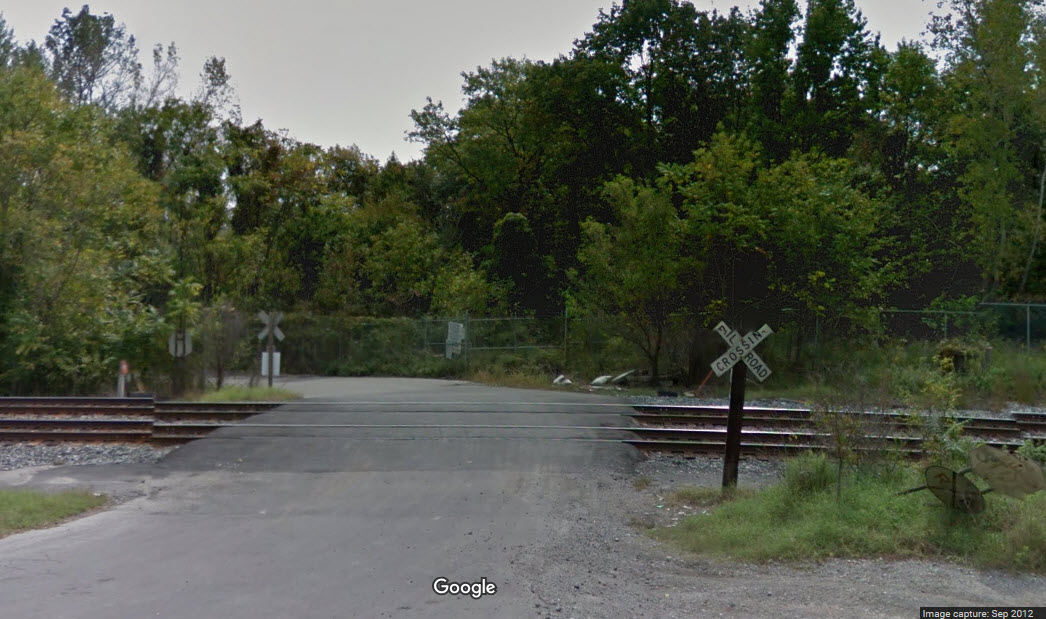

Simple Flashing Only Installations
Near Union Bridge MD
This unused crossing signal is on the former Western Maryland line between Reisterstown and Hagerstown MD
Somewhere in (I think) Durham NC
This section contains what we have come to expect as the standard grade crossing - crossing gate in the U.S.
Simple installations consist of just
the crossing gates themselves. More elaborate installations will often add
a cantilever type signal bridge with one or more pairs of flashing lights,
as many newer installations are.
A excellent picture resource on American grade crossings can be found at:
http://www.rxrsignals.net
Clifton VA - on the ex Southern Rwy (NS)
Located halfway between Fairfax and Manassas VA, is this
quaint little spot called Clifton, contains a set of standard US&S crossing
gates. The left picture is the gate on the south side of the tracks, the other
two are of the signal on the north side.

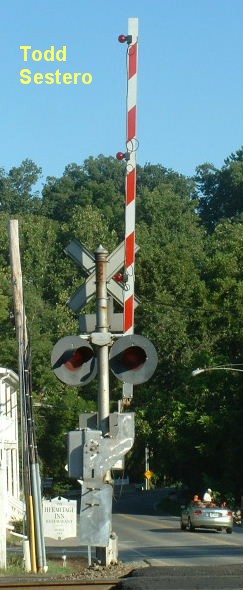
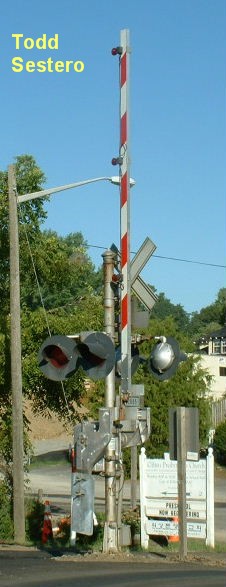
Grand Haven MI
Albion
MI
Ashland VA
This crossing gate is on the former
Richmond, Fredericksburg and Potomac Rwy (now CSX). Notice the signal also
has a "no left turn" light on it.
Timonium MD
In the middle of 2005, the Maryland MTA was in the middle of double tracking the light rail on the northside of the system, from the shops northward. This crossing is at Timonium Road when they were in the middle of replacing track. If you notice, the sign says "3 tracks". Back in the old Pennsy through Conrail days, there used to be three tracks here because of a siding that used to go into Saco Lumber.
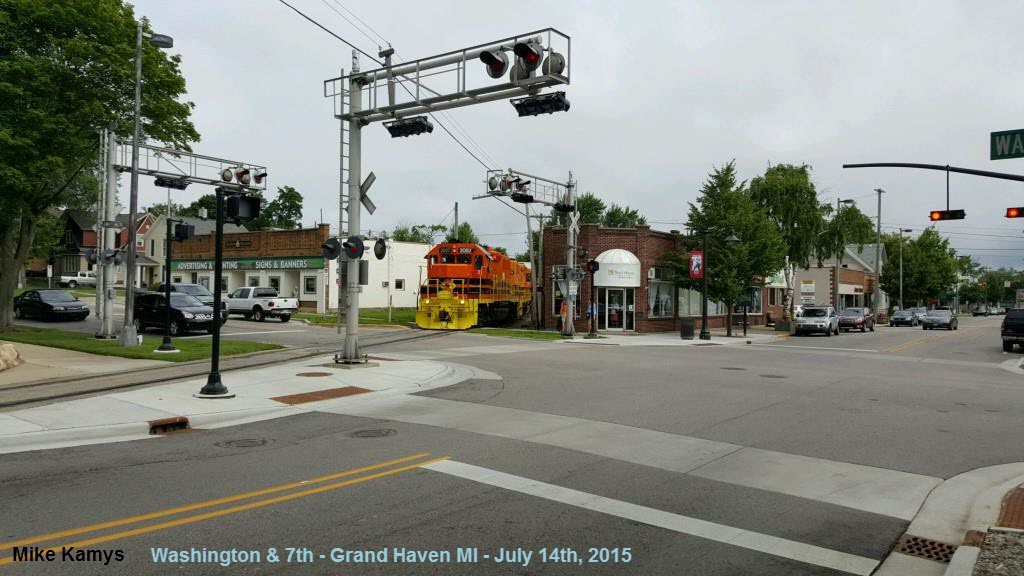 In Grand Haven MI, photo by Mike Kamys
In Grand Haven MI, photo by Mike Kamys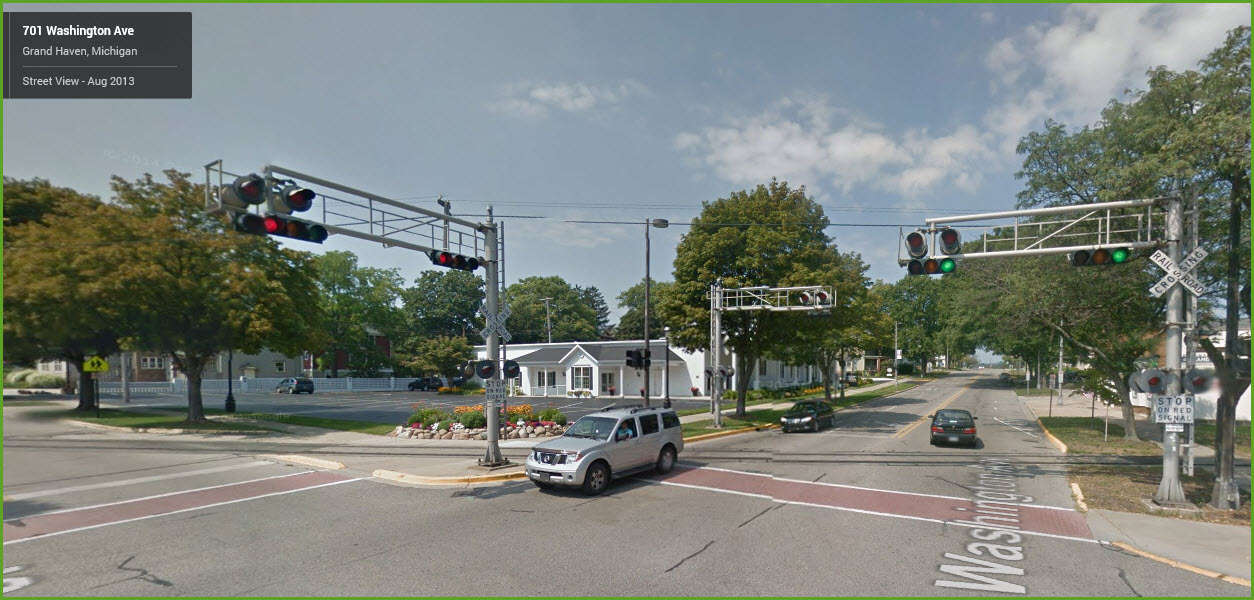 Grand
Haven MI, Google Maps
Grand
Haven MI, Google Maps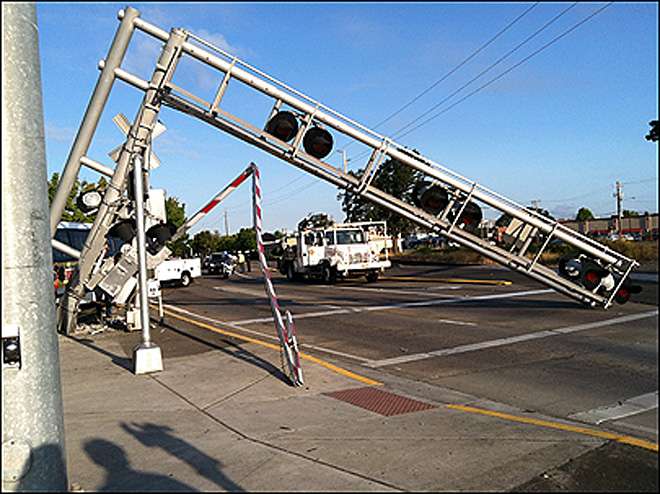 oooooops
oooooopsWig-Wag signals were an early form of grade crossing protection for automobiles wishing to cross a railroad right-of-way. In the early 1900's, as traffic volumes increased with both the railroads and automobiles, the number of grade crossing accidents rose, along with casualties. The railroads attempted to produce some sort of signal that would alert drivers to the presence of an oncoming train. The familiar "stop, look, and listen" signs were no longer effective once car manufacturers enclosed the car compartment, and hearing an approaching train became difficult.
History
According to Wikipedia, one of the earliest attempts to make a moving mechanical signal was by Pacific Electric of Los Angeles. They reasoned that the familiar grade crossing attendant, making a swinging motion with his lamp to alert motorists, was a good choice, and developed a machine that would simulate that motion. The first version used gears and was made in house, and was difficult to maintain. They eventually decided to use two electro-magnets to pull the banner back and forth, which also allowed the banner to sit "in the middle" when at rest.
Wig-Wags were made by a number of manufacturers: WRRS (Western Railroad Supply), Magnetic Signal Company, and US&S.
Someone in L.A. probably saw the signals on the PE, and decided to capitalize on the "success" of the design. My guess is that the Pacific Electric, being a transit company, probably wasn't overly concerned with filing a patent on their creation. (Don't quote me on this, it's only conjecture). So, the Magnetic Flagman company was originally based in Los Angeles. After WWII, the company was bought by the Griswold Company of Minneapolis. Models made in Minneapolis are rare today.
There are three predominant styles of wig-wags: 1) upper quadrant, 2) lower quadrant, and 3) enclosed. Enclosed wig-wags were also called "banjo's". With upper quadrant wig-wags, the banner sat above the motor housing, and required the use of a counter weight below the motor to bring the banner to rest in the middle. A lower quadrant wig-wag had the banner hanging from the motor housing, and as such, did not require the use of a counter weight to hang in the middle when at rest. "Enclosed" wig-wags were top-of-mast style signals, where the motor was supported by a "harp".

(L) An "enclosed" WRRS wig-wag in my backyard signal graveyard.
(R) A lower quadrant Magnetic Signal wig-wag in Ashland Oregon, photo by Robert
Ashworth
Most wig-wags were single units, a few double wig-wags did exist however. The last one I know of was in Roseburg Indiana, as shown below. Photo by Aaron Border, and was taken around the time I stopped thru town chasing the GP-30's of the Central of Indiana RR. Roseburg is east of Kokomo.
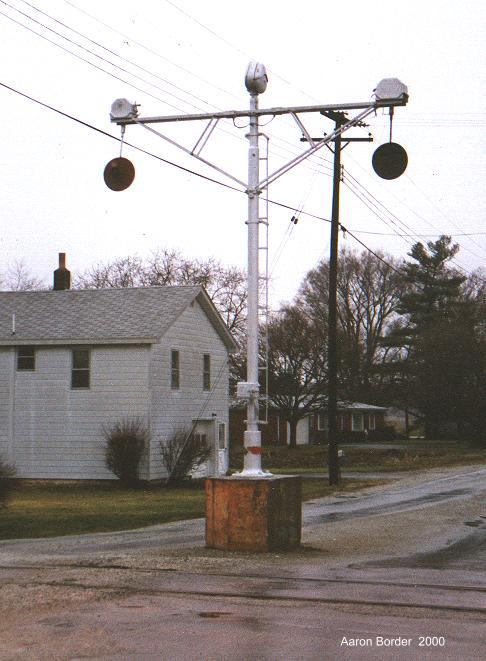 A rare double lower-quadrant wig-wag in Roseburg
IN
A rare double lower-quadrant wig-wag in Roseburg
IN
If you look hard, you may still be able to find one still in operation, but they are becoming increasingly rare, and can usually only be found on less used tracks.
The N&W used to have hundreds of wig-wags in use, most apparently from WRRS. Most were gone by the late 70's, with a few surviving in the early 80's. The last one may have been in Copenhaver (from a thread on N&W wig-wags).
One very interesting use for wig-wag signals is contained below in the link to the Santa Fe Historical Society's page on wig-wag's used on that railroad to communicate to the engineer a highball condition or a stop condition, check it out! This was before the days of radio.
WRRS Model 5 Auto-Flag Wig-Wag on display in Grand Haven MI in the Pere Marquette railroad park.
For more information, and pictures,
check out these resources:
Dan's Wig-Wag site:
http://www.trainweb.org/dansrailpix/WIG_WAG_PAGE1c.htm
Wikipedia:
http://en.wikipedia.org/wiki/Wigwag_(railroad)
The South Bay Historical Railroad Society's wig-wag:
http://www.sbhrs.org/museum/Artifacts/Wigwag/wigwag.html
The Santa Fe's Historical Society's page on wig-wags used on
cabooses:
http://www.atsfrr.net/resources/Sandifer/WigWag/Index.htm
N&W Historical Society thread on wig-wags:
http://list.nwhs.org/pipermail/nw-mailing-list/Week-of-Mon-20060904/004971.html
A wig-wag in Ashland OR, and other stuff by Robert Ashworth:
http://www.theslowlane.com/04trip/wigwag.html
WRRS Wig-Wag, on display in Durand
Michigan in the railroad park.
CLICK
HERE for my railfan guide to Durand.
WRRS Magnetic Autoflag Wig-Wag in my backyard
This signal came off the CNW in Wisconsin, and was purchased from a railroad museum in western Wisconsin in 2000.
For more pix of WRRS wig-wags, check out Dan's page at:
http://www.trainweb.org/dansrailpix/WIG_WAG_wrrs1.htm
At the Chattanooga Choo-Choo in Chattanooga TN
Rotating Banner signals combined standard flashing lights with crossbucks and a rotating stop sign. Upon activation, the flashing lights would come on, and the stop sign, which was at right angles to the roadway, to turn 90 degrees so that it was visible to oncoming traffic.
These signals were very popular in the Minneapolis area because they were manufactured by Griswold which was based there. They were also popular on some of the Midwest and Western roads such as the CNW, the Soo Line, the NP, and the Minneapolis and St Louis.
WRRS also made a version of the Rotating Banner, known as the Model 6, and was used on roads such as the CRIP, the CGW, and the CB&Q.
The Griswolds can still
be found on the less used lines around Minneapolis, especially those used by the
Minnesota Commercial on the line between St Paul and Northtown Yard south of
Fridley. None of the ones I saw however had the stop signs left on them.
There are also a few left on the abandoned Soo R-O-W heading south out of
Minneapolis, where I found the one below.
Burnsville MN area
Grade crossing at 155th St W and Kenwood Trail.... 1/2mi north of 162nd St W, which is exit 86 off of interstate 35. The old station is still standing (or should I more correctly say "shelter").
NE Minneapolis MN area
Photo by Chad Kluck. 22nd St NE.
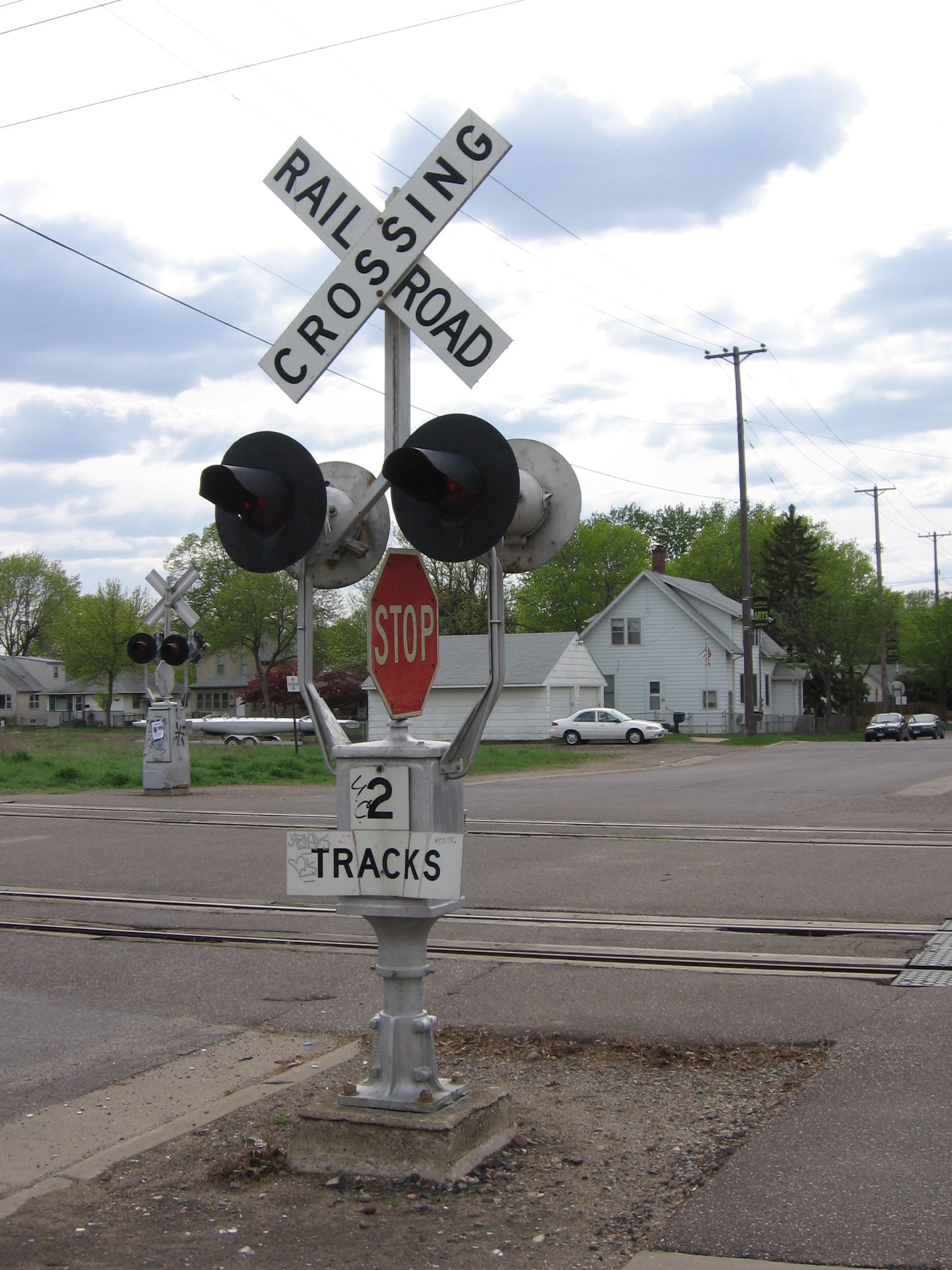
Plymouth MN - NW of Minneapolis
Two complete Griswolds guard a no-longer existing grade crossing.
A big thanks to Jim Mihalek for finding and taking detail pictures of these fellas!







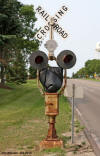
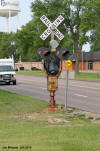
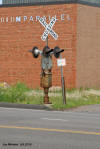
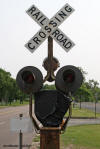
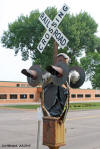
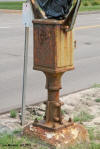
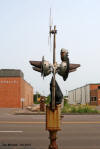
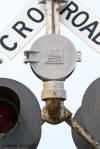
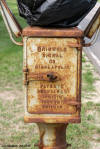
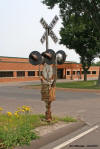
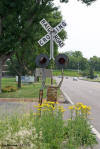
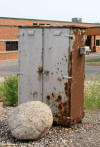
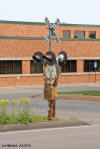
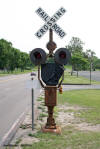
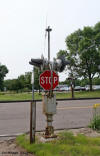

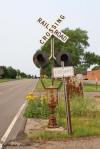
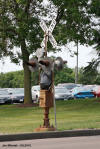
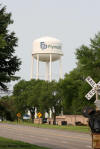
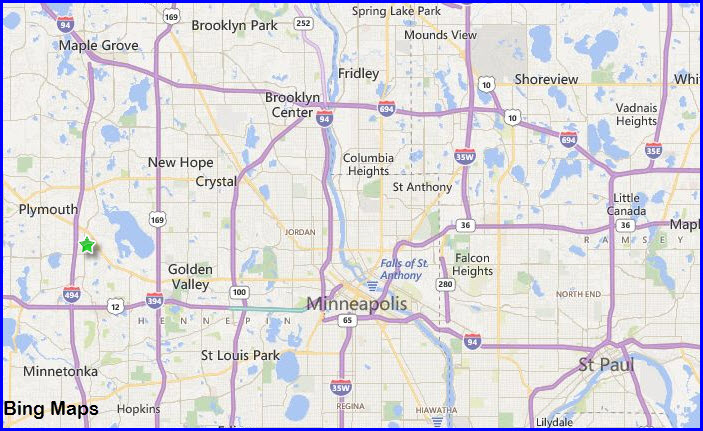
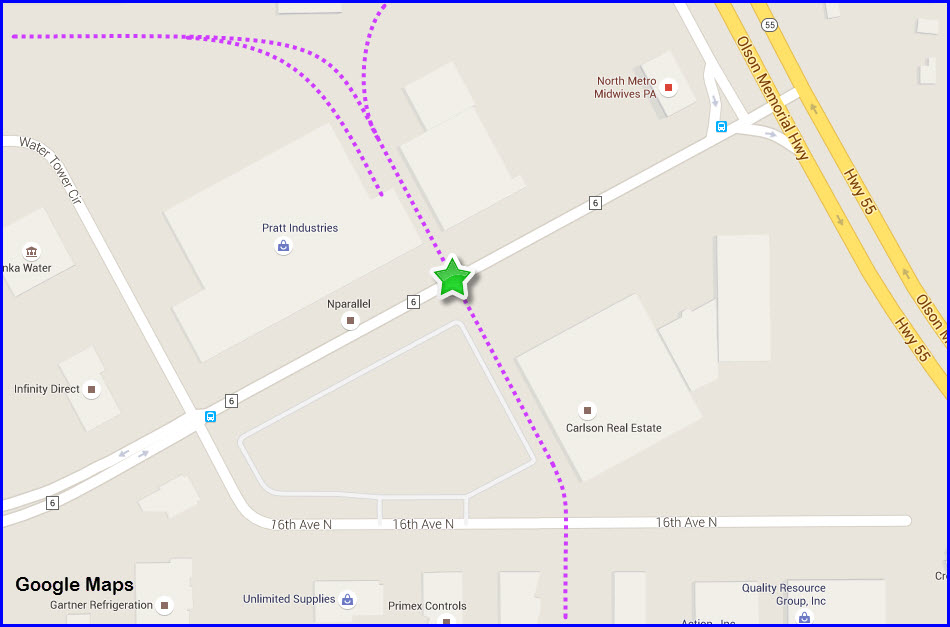
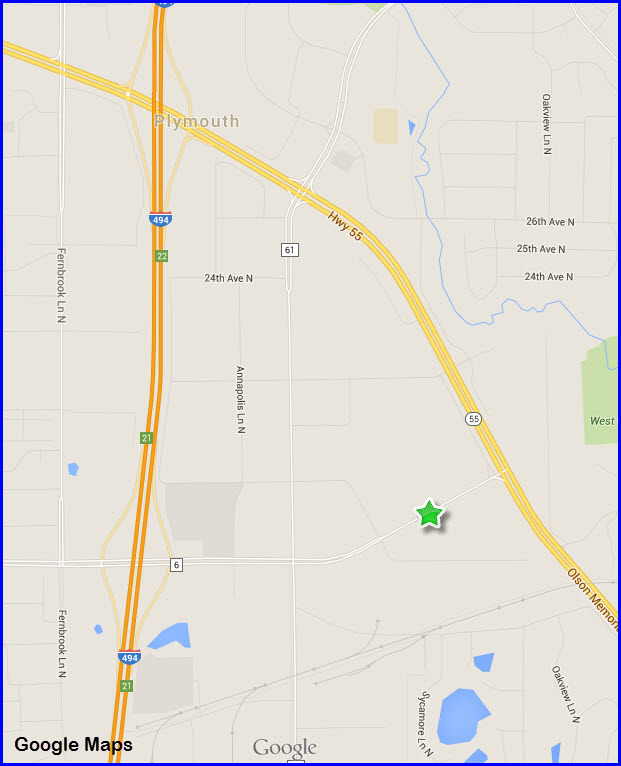
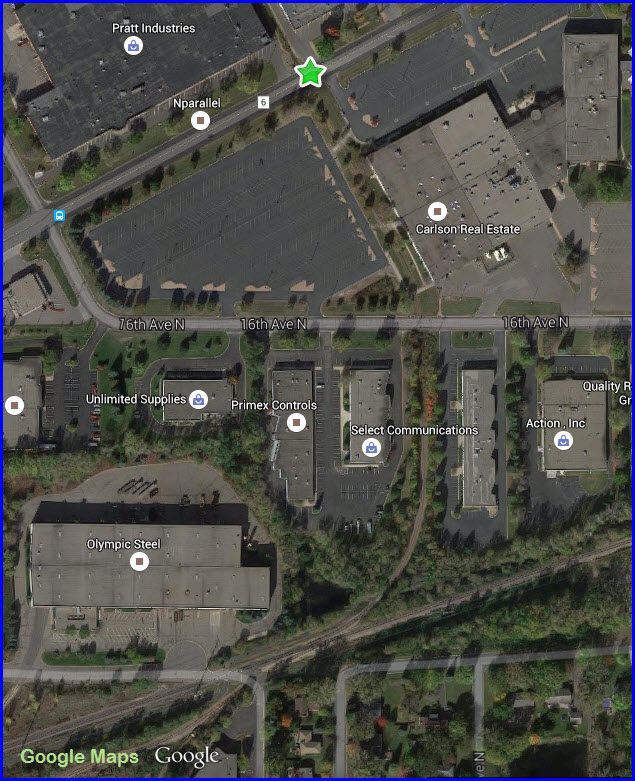
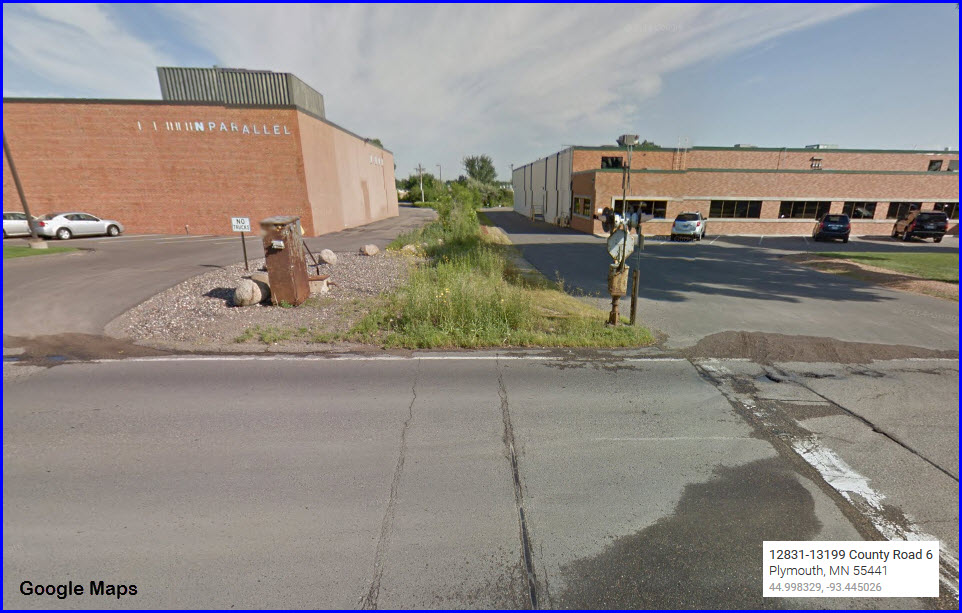
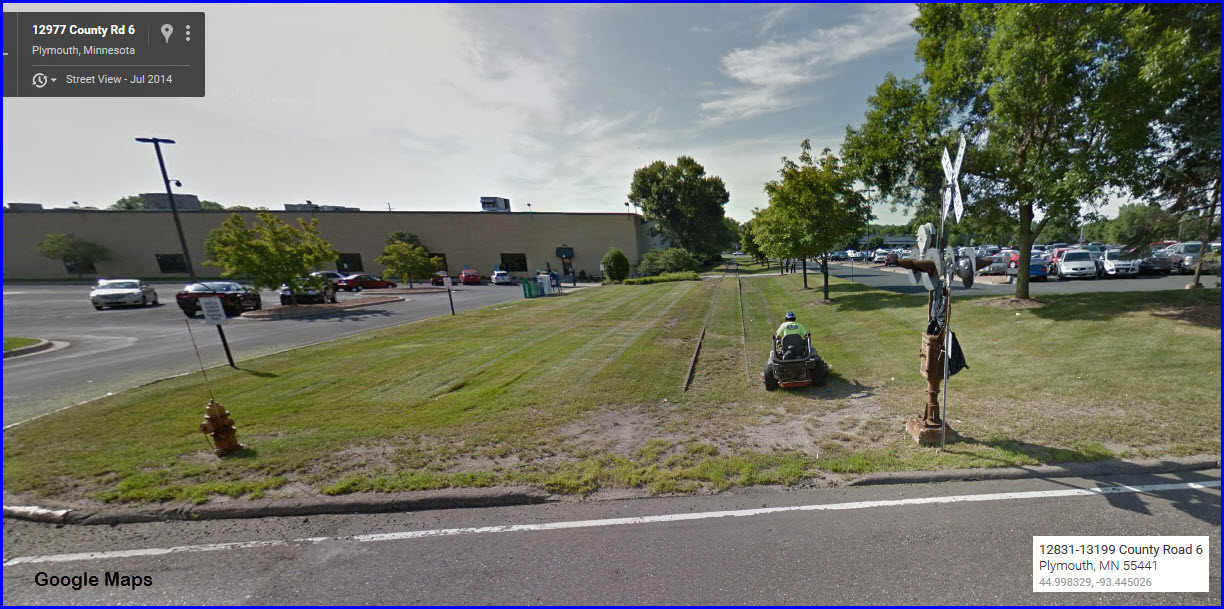
North of Duluth MN
A set of
three pictures from the days of yore, showing the Griswolds that operated along
the Erie Mining RR
tracks in upper Minnesota
by Jim Mihalek.
I wonder if the
signals are still there?
The F Units were trashed in a runaway wreck back in
1997...... darn. LTV Steel took over Erie Mining in 1987, and made its
last run in 2001. F Unit #4211 was donated to the
Lake Superior Railroad Museum
(Duluth MN) in 2006.
Again, a huge thanks to Jim Mihalek for these pictures!
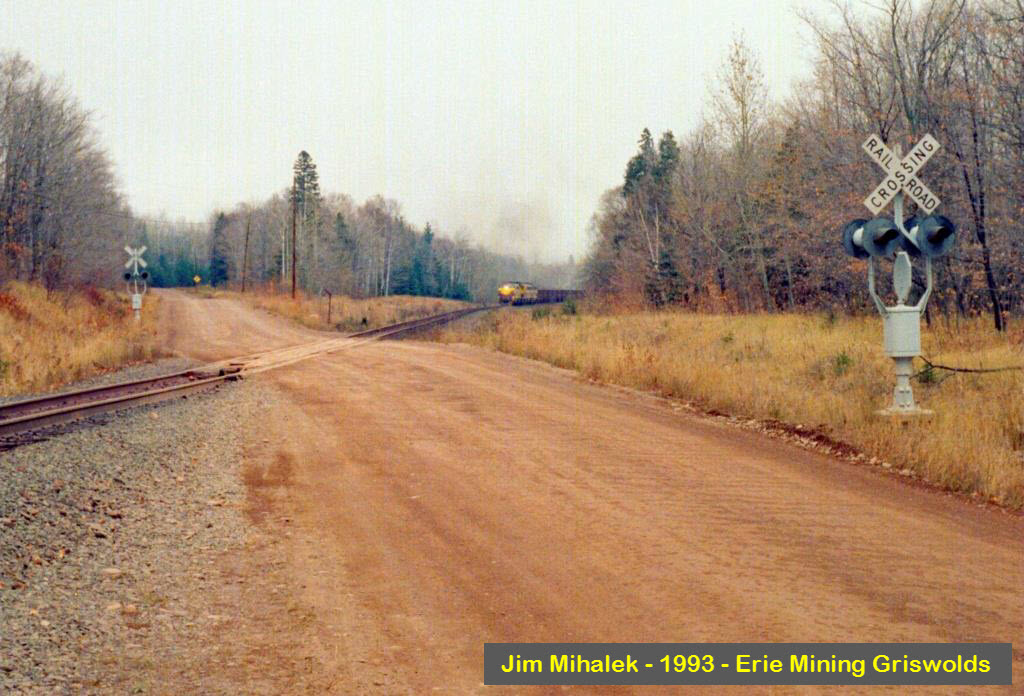
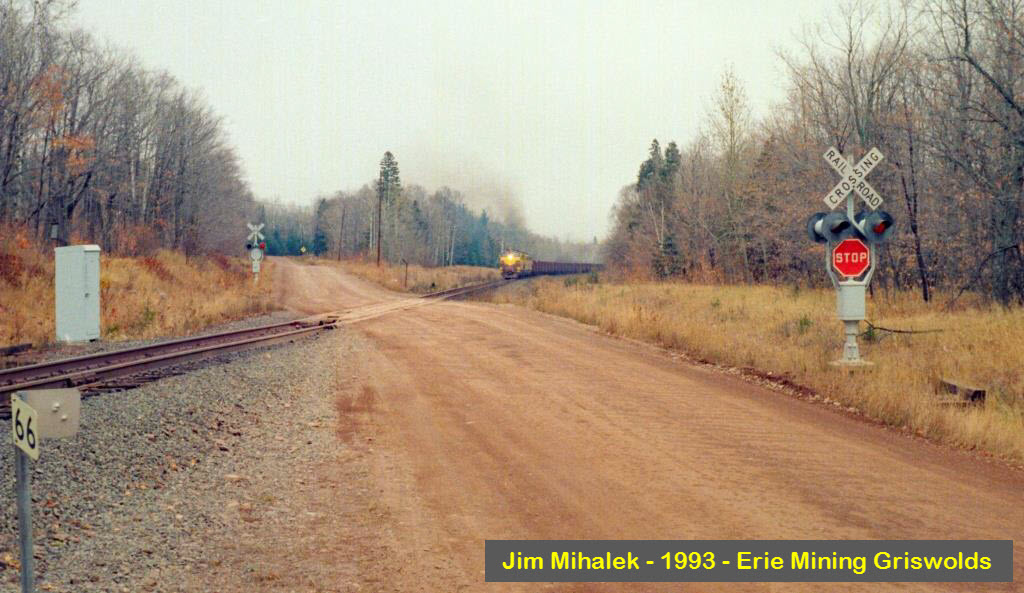
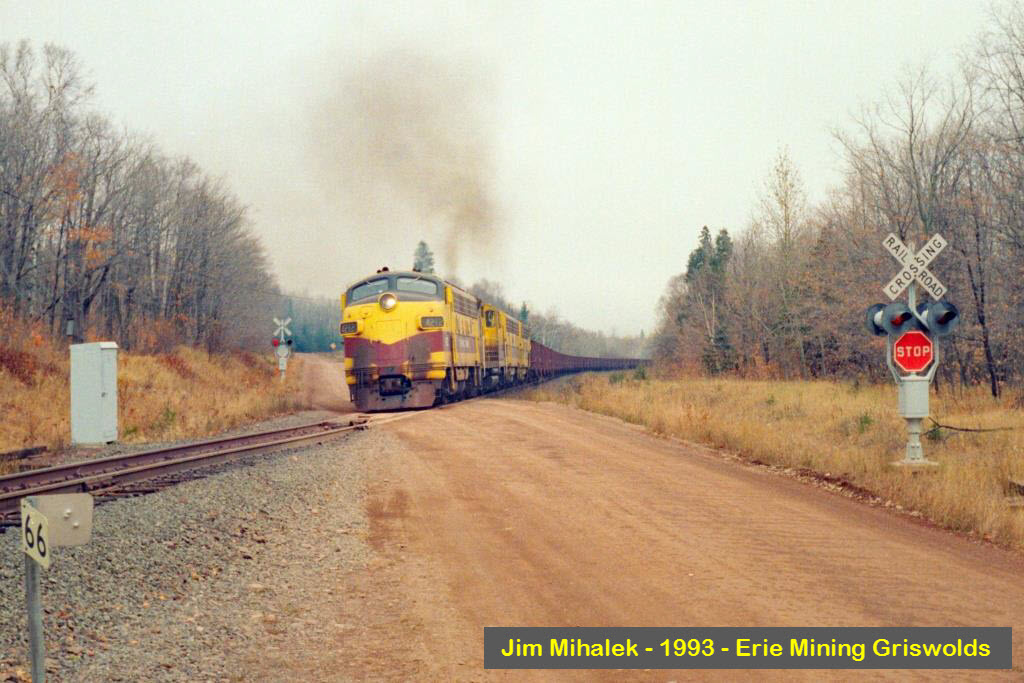
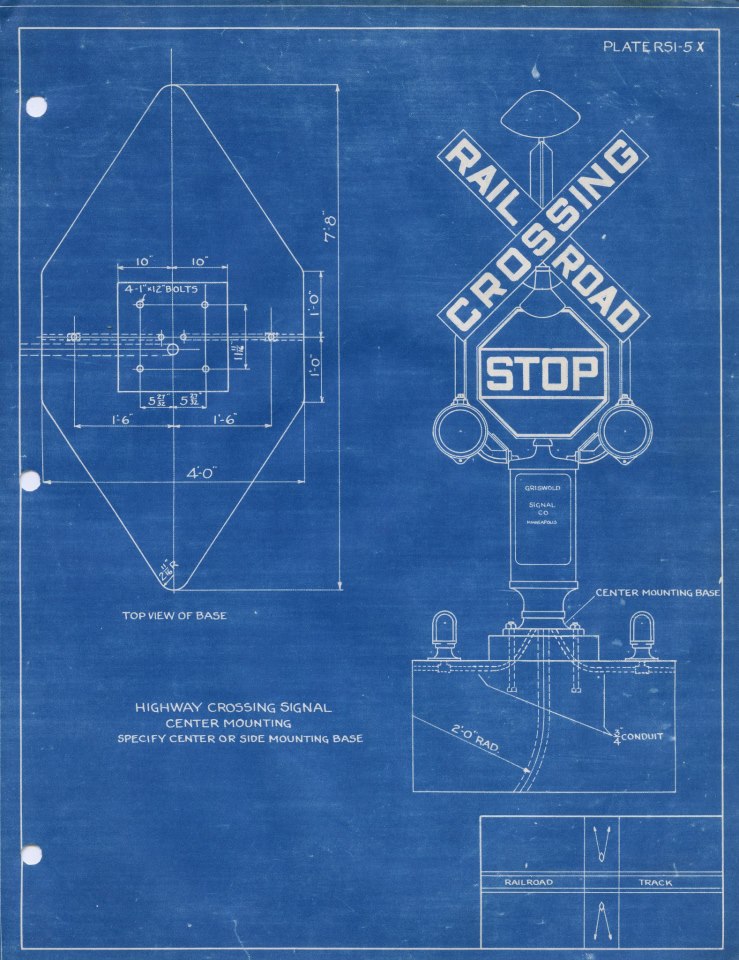
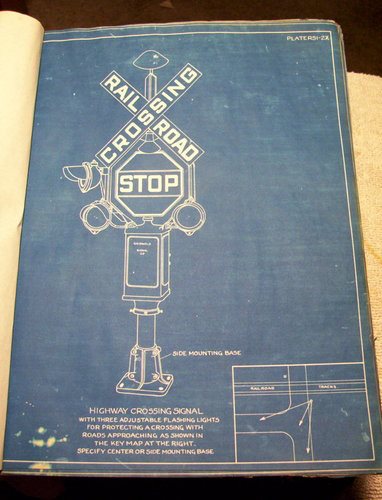
Misc Grade Crossing Protection Devices
Elliston VA
This grade crossing signal protects
a private grade crossing on the Norfolk Southern (ex N&W), between Salem and
Christiansburg VA. As the sign says, the lamp goes dark when a train is
approaching. Salem is to the left (to the north), and
Christiansburg to the right. The signal heads are PL heads off of a standard
Pennsy/N&W style PL-1 signal (a picture is also provided to illustrate the
difference).
Lots of good NS action shots can be had in
this great railfanning area! My daughter went to Virginia Tech, and it provided
me the opportunity for a lot of good photo-ops.
This signal can be found on my Salem to Christiansburg VA chase map, located
here,
which is part of my Roanoke railfan guide series, check it out....
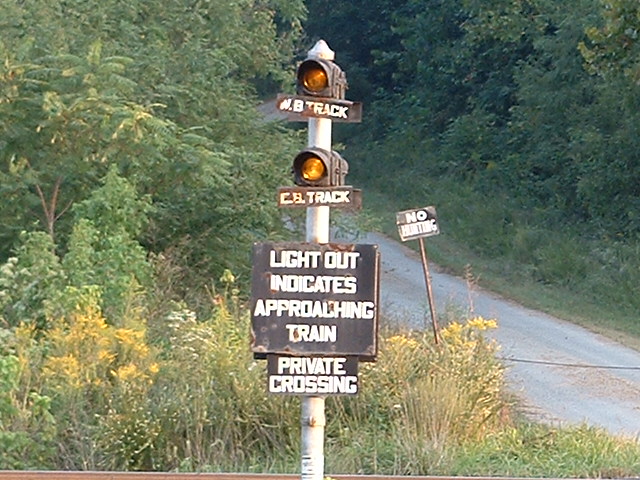
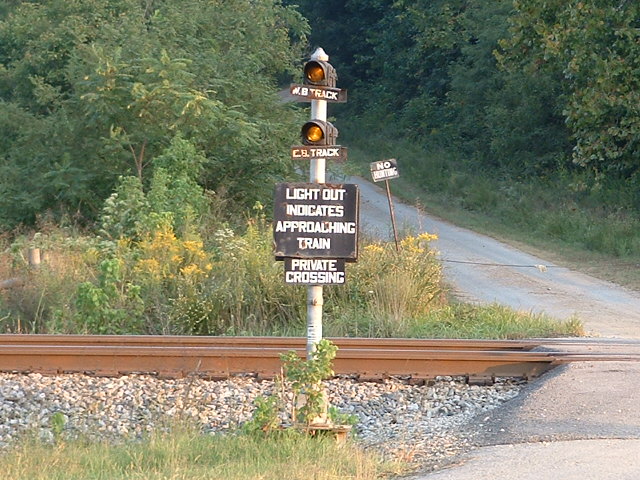
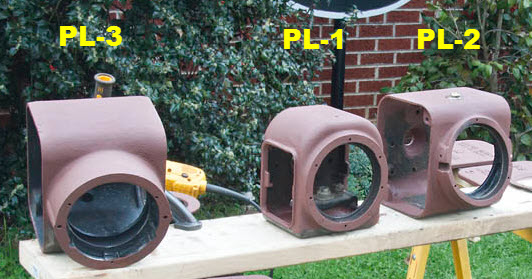
Disclaimers:
I love trains, and I love signals. I am not an expert.
Please Note: Since the main focus of my two websites is railroad signals, the railfan guides are oriented towards the signal fan being able to locate them. For those of you into the modeling aspect of our hobby, my indexa page has a list of almost everything railroad oriented I can think of to provide you with at least a few pictures to help you detail your pike.
If this is a railfan page, every effort has
been made to make sure that the information contained on this map and in this
railfan guide is correct. Once in a while, an error may creep in..... :-)
By the way, floobydust is
a term I picked up 30-40 years ago from a National Semiconductor data
book, and means miscellaneous and/or other stuff.
Pictures and additional information is always needed if anyone feels
inclined to take 'em, send 'em, and share 'em, or if you have
something to add or correct.... credit is always given! BE NICE!!! Contact info
is here
Beware: If used as a source, ANYTHING from Wikipedia must be treated as being possibly being inaccurate, wrong, or not true.
RAILFAN GUIDES HOME
RAILROAD SIGNALS HOME
NEW 10-22-2006
Last
Modified 05-Nov-2016